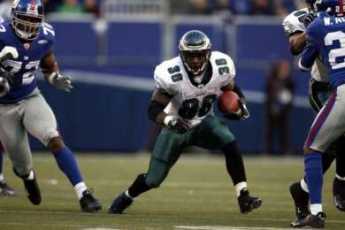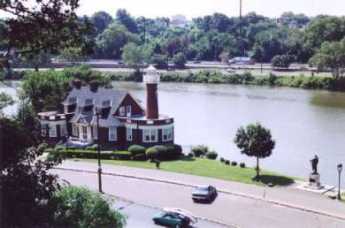Related Topics
Sporting Philadelphia
A few reflections about sports in and around Philadelphia.

Particular Sights to See:Center City
Taxi drivers tell tourists that Center City is a "shining city on a hill". During the Industrial Era, the city almost urbanized out to the county line, and then retreated. Right now, the urban center is surrounded by a semi-deserted ring of former factories.
City of Rivers and Rivulets
Philadelphia has always been defined by the waters that surround it.
Customs, Culture and Traditions
Abundant seafood made it easy to settle here. Agriculture takes longer.
Volunteerism
The characteristic American behavior called volunteerism got its start with Benjamin Franklin's Junto, and has been a source of comment by foreign visitors ever since. It's still a very active force.
Touring Philadelphia's Western Regions
Philadelpia County had two hundred farms in 1950, but is now thickly settled in all directions. Western regions along the Schuylkill are still spread out somewhat; with many historic estates.
Skating and Humane

|
| Outdoor Ice Skating |
There was a time when ice skaters and rowing enthusiasts were having a little war on the Schuylkill, and the rowers won. We are indebted to our dear friend the late Elmer Hendricks Funk MD, a past president of the Philadelphia Skating and Humane Society, for some of the history.
Ice skating is both dangerous and seasonal. In the Eighteenth Century, ice skating was concentrated near the center of population on the Delaware River, and that's where you found the Skaters Club. You also found the Humane Society, whose main function was to pull drowning skaters out of the water. The Humane Society got to be quite rich because people were inclined to be sympathetic to lifesavers. In time, however, people moved away from Delaware and the two clubs, Skating and Humane, merged. No doubt the skaters thought they would be acquiring the substantial endowment of the life-saving club, but in fact, the Pennsylvania Hospital got most of the money in one of those genteel struggles that volunteer organizations sometimes get into. Skating moved from Delaware to the Schuylkill, and the club built a little house on what is now boathouse row, right next to the lighthouse.

|
| Turtle Rock |
The lighthouses at Turtle Rock was useful for the southern terminus of the canal just across the river on the West Bank, and for many years there was a little canal house on the Westside, making it easier to see what this was all about. The lighthouse became incorporated into a boathouse for the first women's rowing club, but the club died out and this combined, Sedgley, is now a women's luncheon club. Next door was the Skaters and Humane, fighting to survive among all the rowers. Since rowing has a much longer season than skating, the skaters feared they would be overwhelmed. They passed a club by-law that no officer of the club could be a rower.
However, the skaters had another enemy in the ice companies, who tended to chop up the first and best ice to form in the area. And the final blow came when the Arena was built at 45th and Market Street with artificial indoor ice. So, the boathouse became the home, in 1938, of the Philadelphia Girls Rowing Club, and the skaters and lifesavers moved first to the Arena, and then to Ardmore. Haverford College was glad to sell them a swamp they owned there since it wasn't much good for a college but the local springs provided needed water for the skating rink. With a rink, skating became year-round, and there was a roof to protect against snow and rain. You can't fall through the ice in a rink.
The club had a number of lucky breaks by being first, constructing its building cheaply in the depression, being able to use ammonia as a refrigerant, and getting cheap land. There are other skating clubs, but few of them own their own rinks, and no other skating club has the national prestige of the Philadelphia Skating and Humane Society. It is the oldest, the first, the best, and the most famous. If you are anybody in skating, this is where you want to skate.
Originally published: Monday, June 26, 2006; most-recently modified: Wednesday, June 05, 2019